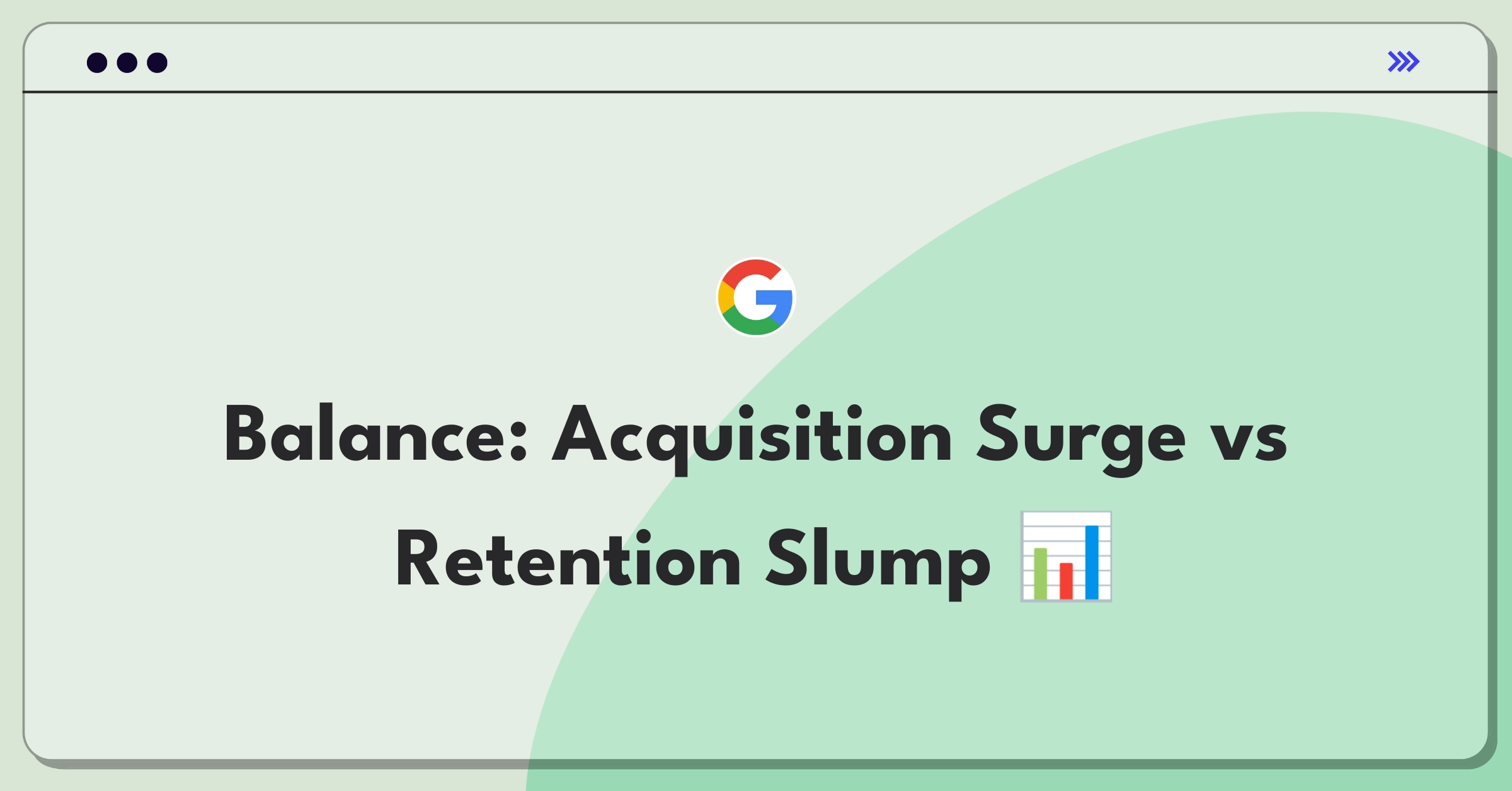Introduction
The scenario we're facing is a high acquisition but low retention situation, which is a critical product trade-off that many companies encounter. This presents a unique challenge where we're successfully attracting users but struggling to keep them engaged long-term. I'll address this issue by analyzing the root causes, proposing solutions, and outlining a strategic approach to improve retention while maintaining our strong acquisition performance.
Analysis Approach
I'd like to outline my approach to tackling this problem, ensuring we're aligned on the key areas we'll explore.
Step 1
Clarifying Questions (3 minutes)
To better understand the context, I'd like to ask a few key questions:
- Why it matters: This helps us gauge the severity of the problem and set realistic improvement targets.
- Hypothetical answer: Our 30-day retention is 20%, while the industry average is 35%.
- Impact: If significantly below average, we may need more aggressive strategies to improve retention.
- Why it matters: Identifies whether our acquisition strategy aligns with users who find long-term value in our product.
- Hypothetical answer: We're acquiring many young users (18-24) but struggling to retain users over 35.
- Impact: We might need to tailor our product features or marketing to better serve and retain older demographics.
- Why it matters: Helps prioritize retention efforts based on financial impact.
- Hypothetical answer: We use a freemium model, and most conversions happen after 60 days of use.
- Impact: Low retention directly impacts our conversion rate to paid users, making this a critical issue to address.
- Why it matters: Could reveal if recent product changes are contributing to the retention issue.
- Hypothetical answer: We simplified our onboarding three months ago to boost acquisition.
- Impact: We may need to re-evaluate our onboarding to ensure it's setting users up for long-term engagement.
- Why it matters: Helps us understand resource constraints for implementing retention strategies.
- Hypothetical answer: We have a dedicated growth team of 5 engineers and 2 designers available.
- Impact: We can plan for both quick wins and longer-term retention projects based on our team's capacity.
Subscribe to access the full answer
Monthly Plan
The perfect plan for PMs who are in the final leg of their interview preparation
$99 /month
- Access to 8,000+ PM Questions
- 10 AI resume reviews credits
- Access to company guides
- Basic email support
- Access to community Q&A
Yearly Plan
The ultimate plan for aspiring PMs, SPMs and those preparing for big-tech
$99 $33 /month
- Everything in monthly plan
- Priority queue for AI resume review
- Monthly/Weekly newsletters
- Access to premium features
- Priority response to requested question


.png)